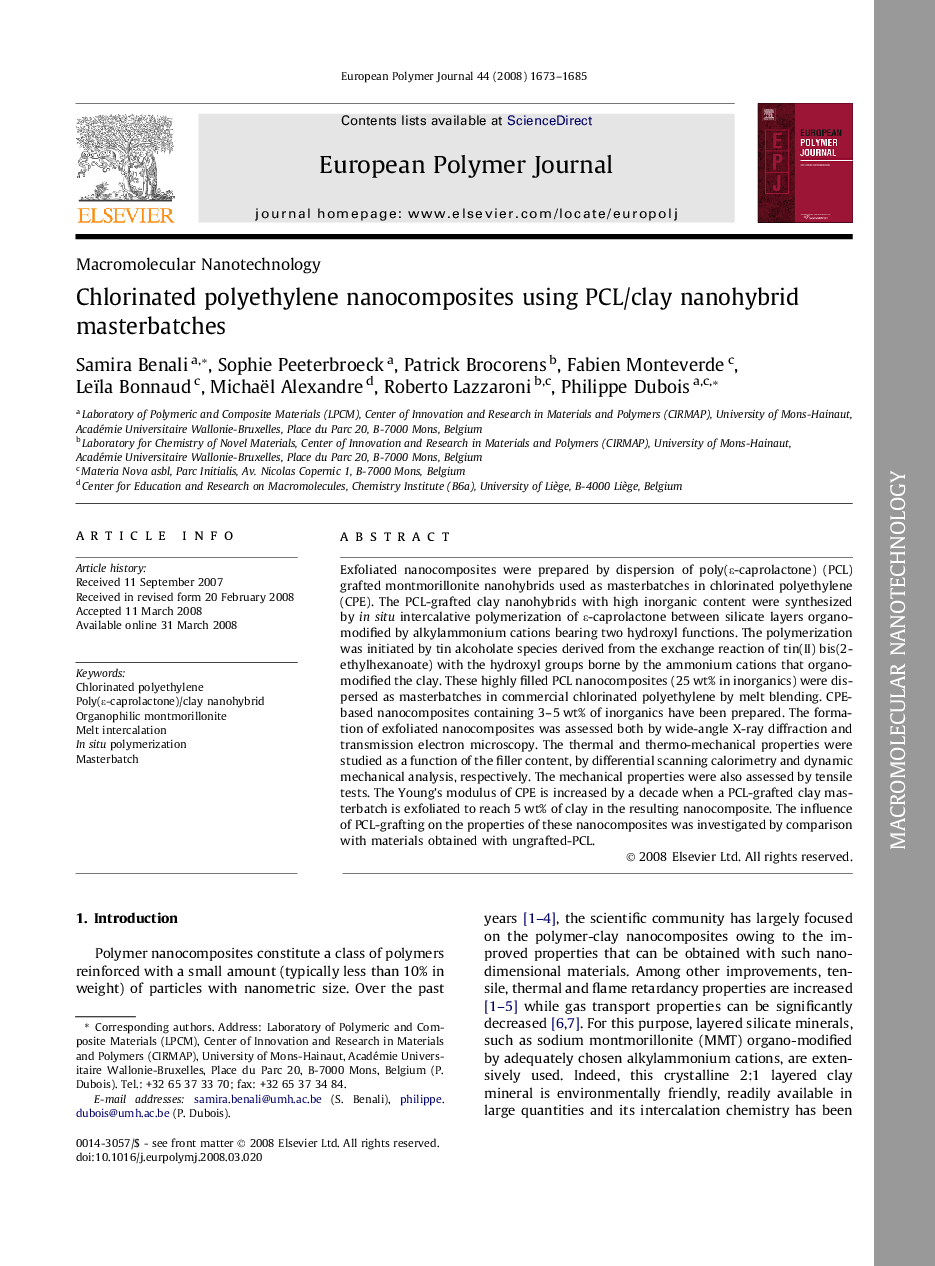| Article ID | Journal | Published Year | Pages | File Type |
|---|---|---|---|---|
| 1401010 | European Polymer Journal | 2008 | 13 Pages |
Exfoliated nanocomposites were prepared by dispersion of poly(ε-caprolactone) (PCL) grafted montmorillonite nanohybrids used as masterbatches in chlorinated polyethylene (CPE). The PCL-grafted clay nanohybrids with high inorganic content were synthesized by in situ intercalative polymerization of ε-caprolactone between silicate layers organo-modified by alkylammonium cations bearing two hydroxyl functions. The polymerization was initiated by tin alcoholate species derived from the exchange reaction of tin(II) bis(2-ethylhexanoate) with the hydroxyl groups borne by the ammonium cations that organomodified the clay. These highly filled PCL nanocomposites (25 wt% in inorganics) were dispersed as masterbatches in commercial chlorinated polyethylene by melt blending. CPE-based nanocomposites containing 3–5 wt% of inorganics have been prepared. The formation of exfoliated nanocomposites was assessed both by wide-angle X-ray diffraction and transmission electron microscopy. The thermal and thermo-mechanical properties were studied as a function of the filler content, by differential scanning calorimetry and dynamic mechanical analysis, respectively. The mechanical properties were also assessed by tensile tests. The Young’s modulus of CPE is increased by a decade when a PCL-grafted clay masterbatch is exfoliated to reach 5 wt% of clay in the resulting nanocomposite. The influence of PCL-grafting on the properties of these nanocomposites was investigated by comparison with materials obtained with ungrafted-PCL.
